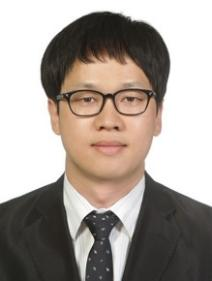Submission Deadline: 15 August 2025 View: 889 Submit to Special Issue
Prof. Ki-Yong Oh
Email: kiyongoh@hanyang.ac.kr
Affiliation: School of Mechanical Engineering, Hanyang University
Research Interests: AI Transformation, Applied Dynamics, Automation and Optimization in Smart factory Physics-informed Neural Network, Prognosis and Health Management

Prof. Hyunseok Oh
Email: hsoh@gist.ac.kr
Affiliation: School of Mechanical Engineering, Gwangju Institute of Science and Technology
Homepage: sddo.gist.ac.kr
Research Interests: Physics-informed machine learning, Industrial artificial intelligence, Fault diagnostics and prognostics, Design optimization

Prof. Minseok Choi
Email: mchoi@postech.ac.kr
Affiliation: Mathematics, POSTECH
Research Interests: scientific machine learning, AI for science, uncertainty quantification

Prof. Jae Hyuk Lim
Email: jaehyuklim@jbnu.ac.kr
Affiliation: Department of Mechanical Engineering, Jeonbuk National University
Research Interests: Data-driven and physics-informed machine learning for digital twin, surrogate modeling, and model discovery, with an emphasis on industrial applications.

1) Introduction
The intersection of data-driven techniques and physics-informed machine learning is revolutionizing the landscape of computational modeling and simulation. These advancements are particularly significant in the context of digital twins, surrogate modeling, and model discovery, offering new pathways to optimize and understand complex industrial systems. The integration of data and physics-informed methods leverages the strengths of both approaches, resulting in robust, accurate, and computationally efficient models that are highly relevant for various industrial applications.
2) Objectives of the Special Issue
This special issue aims to showcase cutting-edge research and practical implementations of data-driven and physics-informed machine learning methods in the realms of digital twins, surrogate modeling, and model discovery. The focus will be on how these innovative approaches are being applied to solve real-world industrial problems, enhancing efficiency, reducing costs, and improving predictive capabilities.
3) The special issue will cover a wide range of topics related to the development and application of PINNs in multiphysics systems, including but not limited to:
· Digital Twins:
- Development and implementation of digital twins using machine learning and physics-informed approaches.
- Real-time monitoring, prediction, and optimization using digital twins.
- Case studies of digital twin applications in various industries (e.g., manufacturing, aerospace, automotive).
· Surrogate Modeling:
- Creation of surrogate models for complex systems using data-driven techniques.
- Integration of physics-based knowledge into surrogate models to enhance accuracy and generalization.
- Applications of surrogate models in design optimization, uncertainty quantification, and real-time simulation.
· Model Discovery:
- Techniques for discovering governing equations and underlying physics from data.
- Data-driven approaches to uncover hidden patterns and insights in industrial processes.
- Combining machine learning with domain knowledge for model discovery and validation.
· Industrial Applications:
- Applications in manufacturing, energy systems, aerospace, automotive, and other industrial sectors.
- Case studies demonstrating the impact of data-driven and physics-informed models on industrial operations.
- Challenges and opportunities in deploying these models in real-world industrial settings.



 Submit a Paper
Submit a Paper Propose a Special lssue
Propose a Special lssue